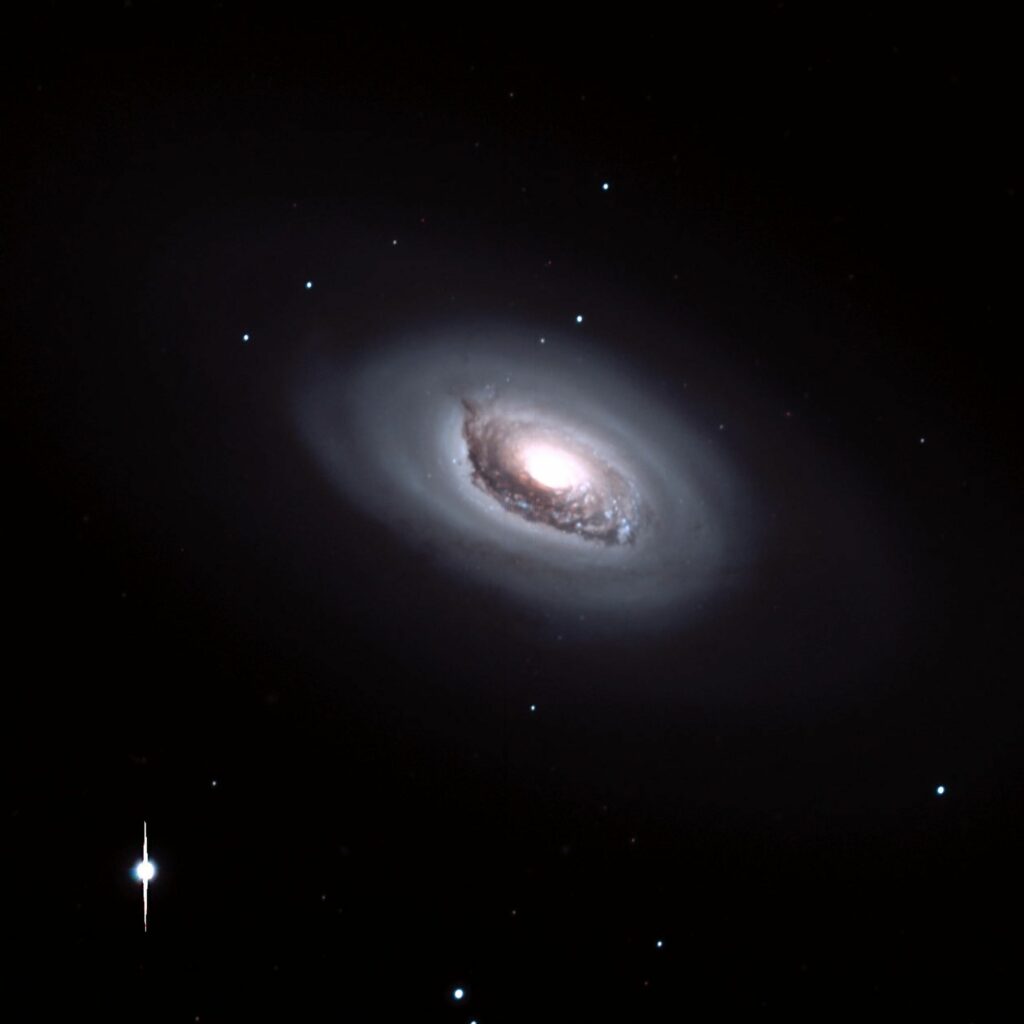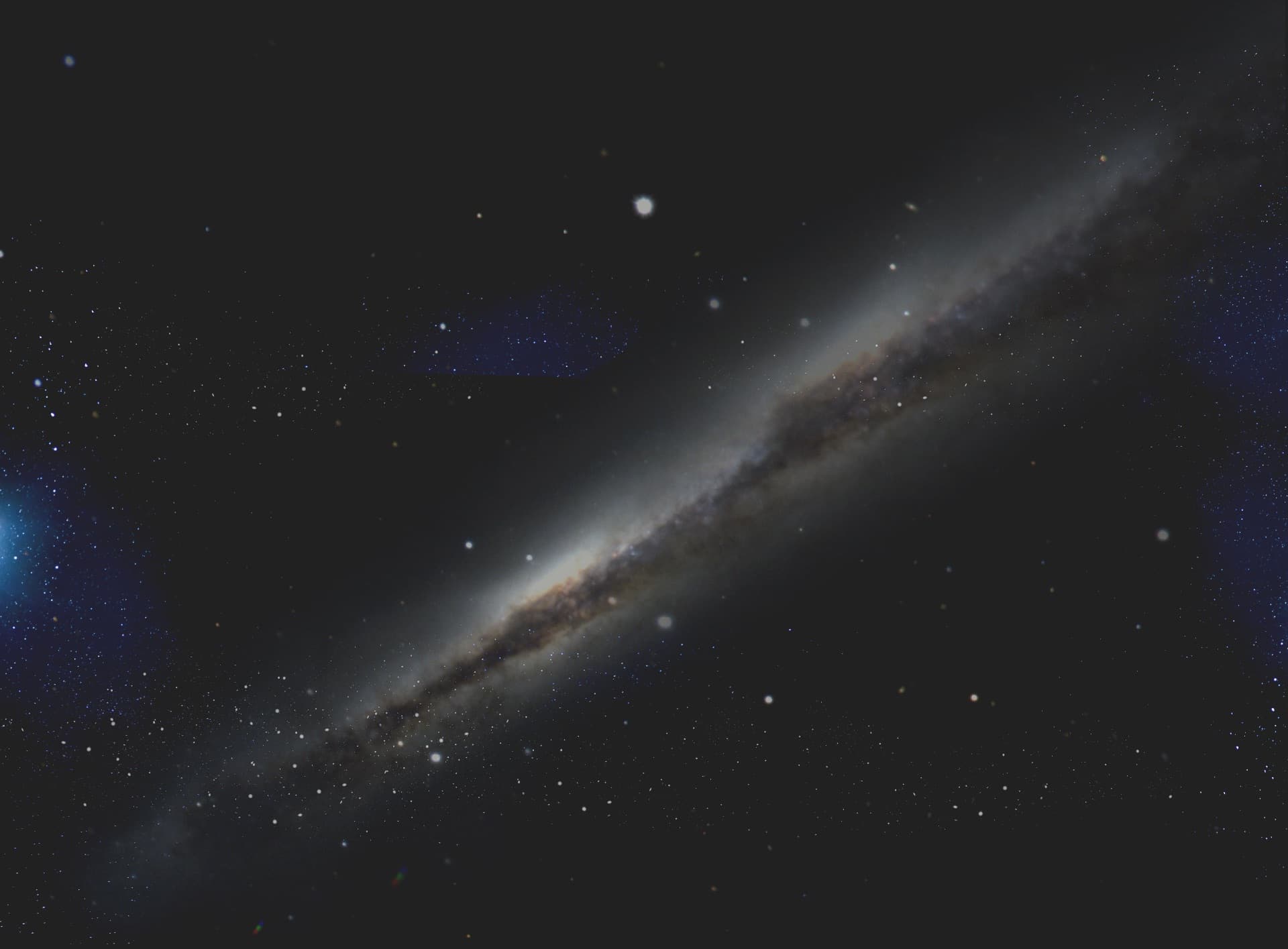Adam Smercina, Eric F. Bell, Paul A. Price, Jeremy Bailin, Julianne J. Dalcanton, Roelof S. de Jong, Richard D’Souza, Katya Gozman, In Sung Jang, Antonela Monachesi, David Nidever, Colin T. Slater: "Origins of the Evil Eye: M64’s Stellar Halo Reveals the Recent Accretion of an SMC-mass Satellite." arXiv, 29 May 2023, https://arxiv.org/pdf/2305.17135.pdf
M64, often called the “Evil Eye” galaxy, is unique among local galaxies. Beyond its dramatic, dusty nucleus, it also hosts an outer gas disk that counter-rotates relative to its stars. The mass of this outer disk is comparable to the gas content of the Small Magellanic Cloud (SMC), prompting the idea that it was likely accreted in a recent minor merger. Yet, detailed follow-up studies of M64’s outer disk have shown no evidence of such an event, leading to other interpretations, such as a “fly-by” interaction with the distant diffuse satellite Coma P.
We present Subaru Hyper Suprime-Cam observations of M64’s stellar halo, which resolve its stellar populations and reveal a spectacular radial shell feature, oriented ∼30° relative to the major axis and along the rotation axis of the outer gas disk. The shell is ∼45 kpc southeast of M64, while a similar but more diffuse plume to the northwest extends to >100 kpc. We estimate a stellar mass and metallicity for the southern shell of M⋆ = 1.80 ± 0.54×108 M⊙ and [M/H] = −1.0, respectively, and a similar mass of 1.42 ± 0.71×108 M⊙ for the northern plume. Taking into account the accreted material in M64’s inner disk, we estimate a total stellar mass for the progenitor satellite of M⋆,prog ≃ 5×108 M⊙.
These results suggest that M64 is in the final stages of a minor merger with a gas-rich satellite strikingly similar to the SMC, in which M64’s accreted counter-rotating gas originated, and which is responsible for the formation of its dusty inner star-forming disk.

